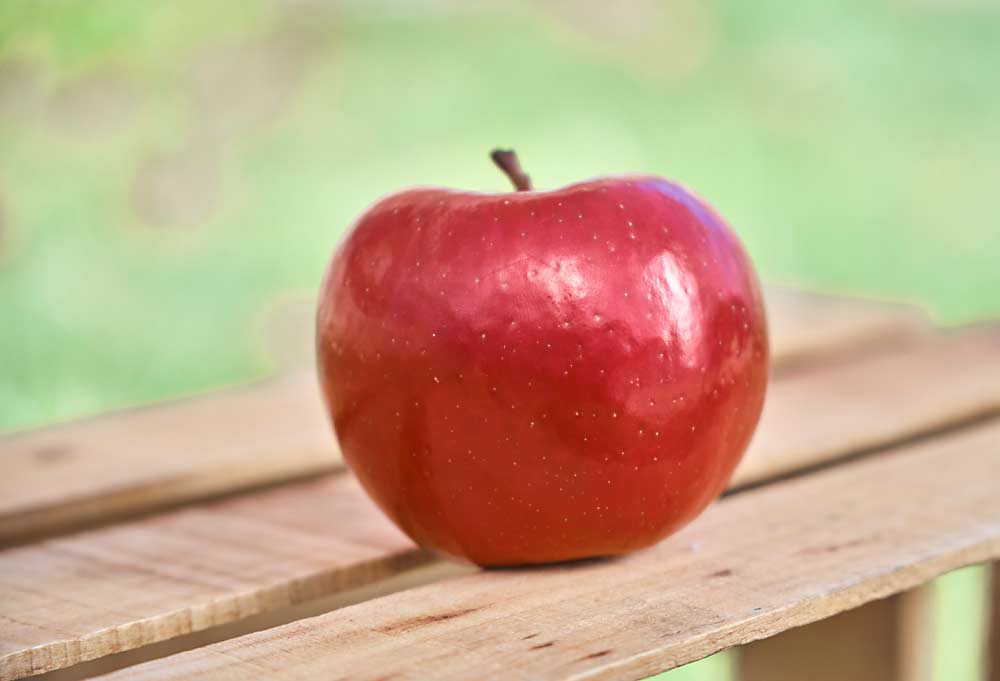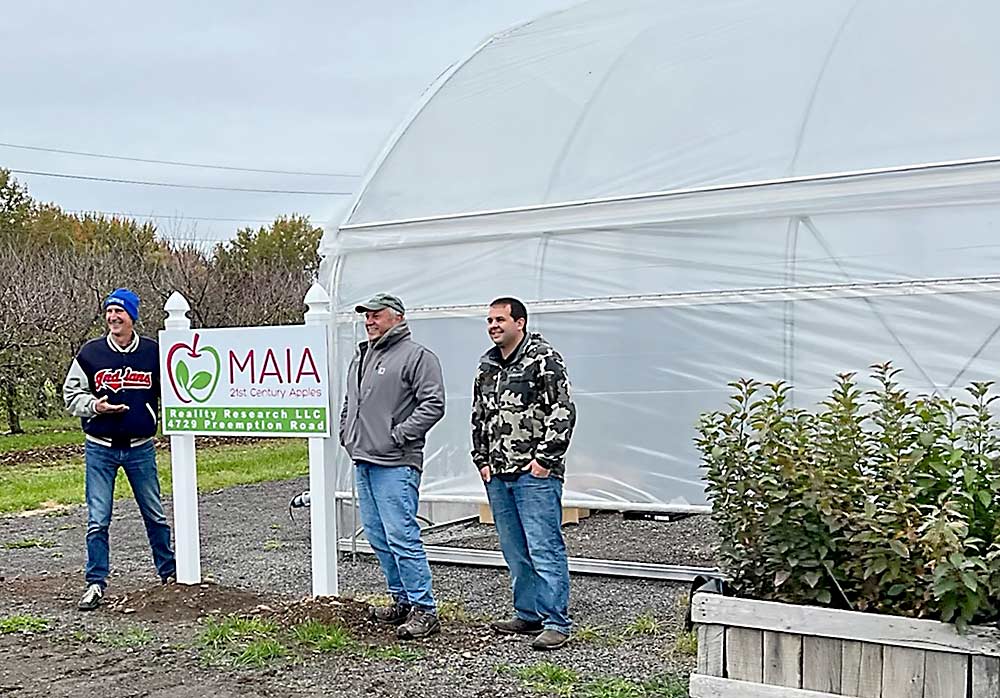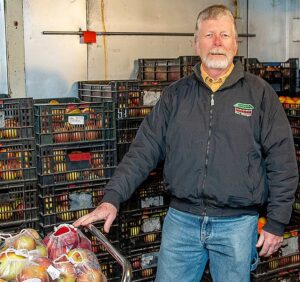
The Midwest Apple Improvement Association has released a new strain of MAIA-1 with more vibrant red skin called MAIA-Mitchell. As with MAIA-1, all MAIA-Mitchell apples that meet quality standards will be marketed as EverCrisp.
A limited number of MAIA-Mitchell trees will be available for sale in 2025, with a larger supply anticipated in 2026. Interested growers should contact their nurseries, said MAIA president Bill Dodd.
Dodd said MAIA-Mitchell has the same flavor, texture and storability of MAIA-1 (a Fuji/Honeycrisp cross) but with better color. He described the strain’s color as “chili red,” and a “blush, not a stripe.”
“Since MAIA-1 was released, everyone raves about its attributes, but they finish by saying, ‘I wish it was prettier,’” Dodd said, adding that MAIA-Mitchell “will only help growers with their pack-outs and profitability.”
Bill Pitts discovered the original MAIA-Mitchell sport in a commercial orchard at Wafler Nursery in Wolcott, New York, in 2018. Pitts, a longtime nursery manager for the Waflers before he retired in 2021, was trimming in a MAIA-1 block when a bright-red apple caught his eye. There was no budwood on that particular tree at the time, so he flagged it and took pictures. The following year, the tree’s apples were just as red, so he took home some budwood and made seedling trees. He didn’t want to make a big deal about his discovery until he was sure he’d found something special.
“We’ve found sports in the past, but some revert back in color or flavor,” Pitts said. “I wanted to make sure the color would stay in second-generation trees.”
It did.
After a few years of evaluation, MAIA-Mitchell still colors consistently, with up to 88 percent of the apple displaying the vibrant red hue. Fruit starts coloring in August, six to eight weeks before MAIA-1 starts to color, but it still ripens at the same time as its predecessor.
Pitts is now an independent horticultural consultant who works with MAIA on apple-breeding projects. MAIA-Mitchell is partially named after his son, Mitchell, who was born with a heart defect in 1993 and died at the age of 4. The name also pays tribute to Ohio apple grower Mitchell Lynd, one of MAIA’s founders, Dodd said.
New greenhouse
In other news, MAIA partnered with a private research company in New York to build a greenhouse and centralize its apple breeding work.
The 30- by 100-foot greenhouse was built last year at the Reality Research farm in Lyons, New York. Costs were split between MAIA and Reality Research, a private company that is owned by the Palmer family and performs research trials for the tree fruit industry.
“We’re incredibly excited about it,” Dodd said. “It’s been an awesome experience working with them.”

Up to now, MAIA’s research model has been grassroots and decentralized, with grower-members from all over the country volunteering to plant variety trials.
The new greenhouse will put most of that research in one place. MAIA will still evaluate varieties in different regions, but the core breeding work will be done at the Reality Research farm. This will streamline the data-gathering process, Dodd said.
The greenhouse will speed up MAIA’s breeding process, as well as provide protection from weather, pollen and pests. Making controlled crosses and raising seedlings in a protected environment will shave years off the breeding and variety evaluation timelines, said Scott Palmer, one of the owners of Reality Research.
Reality Research has been performing rootstock, thinning, bloom date and harvest trials for MAIA since 2016 and will continue those activities, said Brad Palmer, Scott’s son and fellow owner.
The Palmers are growing and evaluating more than 8,000 MAIA seedlings in the greenhouse, with help from Bill Pitts, who made the original connection between MAIA and Reality Research. Varieties considered to have potential are eventually transplanted to test blocks on the Reality Research farm, Brad Palmer said.
—by Matt Milkovich







Leave A Comment